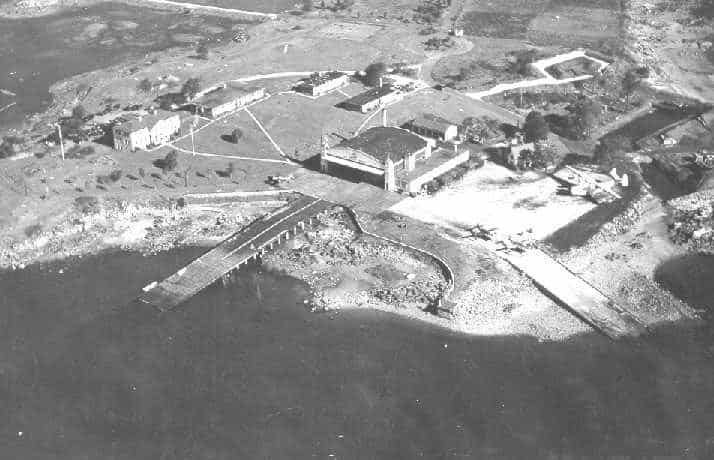
In February of 1935 the Coast Guard established a seaplane facility at Salem, Massachusetts because there was no longer space to expand the Ten Pound Island Gloucester air station. Air Station Salem was located at Winter Island, an extension of Salem Neck which juts out into Salem Harbor. The aviation facilities consisted of a single hangar, a paved 250 ft parking apron, and two seaplane ramps leading down into the waters of Salem Harbor. Salem was equipped with, what were at the time, state of the art communications and modern repair facilities. Barracks, administrative and dinning facilities and motor pool buildings were also part of the complex.
Search and rescue, hunting for derelicts and medical evacuations were the primary areas of responsibility. During the first year of operation the Salem crews performed 26 medivac missions. They flew in all kinds of weather and the radio direction capabilities of the aircraft were of significant value in locating vessels in distress. Fog, on numerous occasions, complicated the situation. One had to see the vessel and the water surface to land. LT P.S Lyons, on one occasion, after obtaining a radio bearing, was unable to see the freighter Blackhawk due to fog. He requested the freighter send up clouds of black smoke from her stack. He saw the smoke, set up an intercept course, let down slowly through the fog until he was just above the water surface and proceeded toward the ship. When he saw the ship he landed along side in a heavy swell, took the seaman aboard, and then rushed him to a hospital saving the man’s life.
Not all of the units work was rescue of course. Duties ranged from counting migratory water foul for the U.S. Biological Survey to carrying provisions, mail and medical assistance to ice bound islands during the winter; transporting serum and medical supplies to threatened communities; and the making of aerial maps. Sometimes emergencies drew the aircraft to inland locations. During the big floods in western Pennsylvania, one of the station aircraft based out of Pittsburg and made the first comprehensive survey of the flooded area. Because of this survey the authorities were able to radio broadcast to the populace a complete picture of the state of affairs in the region.
In 1941 air crews from Salem began to fly neutrality patrols along the coast. During World War II the air station roster increased to 37 aircraft. Anti-submarine patrols were flown on a regular basis. In October of 1944 Air Station Salem was officially designated as the first Air Sea Rescue station on the eastern seaboard. The PBM, a hold-over from the war, became the primary rescue aircraft. In the mid 1950s helicopters came as did the Grumman Albatross amphibians (UFs). Salem Harbor was large enough to provide a seadrome with three sealanes. These offered a good choice of take-off headings regardless of wind direction unless there was a strong steady wind from the east. This produced large waves that swept into the mouth of the harbor making water operations difficult. When the seadrome was too rough returning amphibian aircraft would use Beverly airport.
Recognizing that weather conditions could render the seadrome inoperable from time to time and that night operations in Salem Harbor had become hazardous, a sub-unit, Coast Guard Air Detachment Quonset Point, was established at the Naval Air Station Quonset Point, Rhode Island. With a complement of one Albatross amphibian, four pilots, and eight crewmen, Quonset was responsible for supplementing Salem planes during rescue operations and for fixed-wing flying when Salem could not provide it. The Quonset crews stood a tough port-and-starboard duty schedule of three days on watch and three days off.
Salem Air Station closed in 1970. The Salem and Quonset Point operations moved to Otis Air Force base out on “ The Cape” and Coast Guard Air Station Cape Cod was established.
The CGAS Salem property was turned over to the City of Salem in 1972 and the facilities of the former air station have been allowed to slowly deteriorate. The original hangar, barracks and other buildings still stand but are in disrepair. Historic Salem Incorporated has been able to place Winter Island on the endangered list and they hope to be able to restore the old air station which for 35 years played an important role in this seafaring region.
Note: See 1970 – Air Station Cape Cod Was Established
